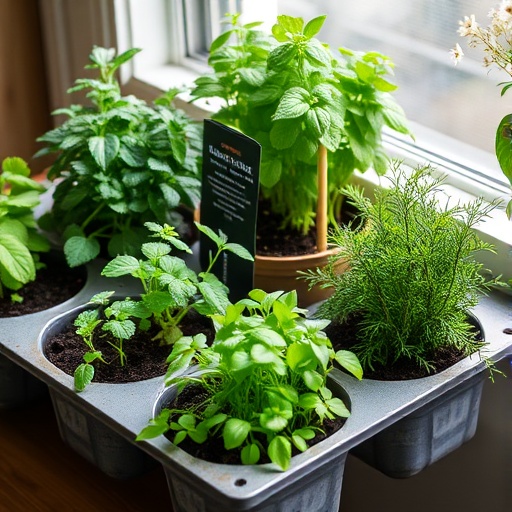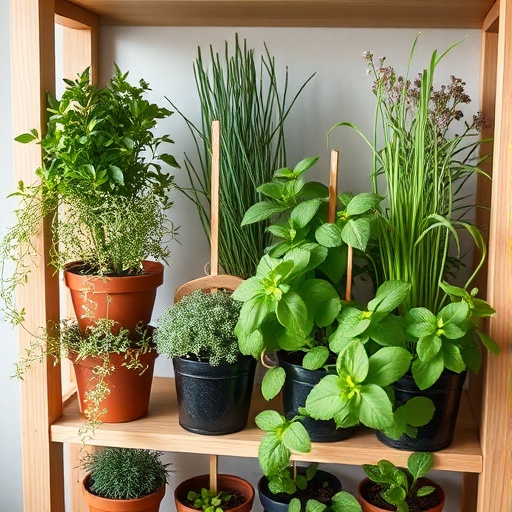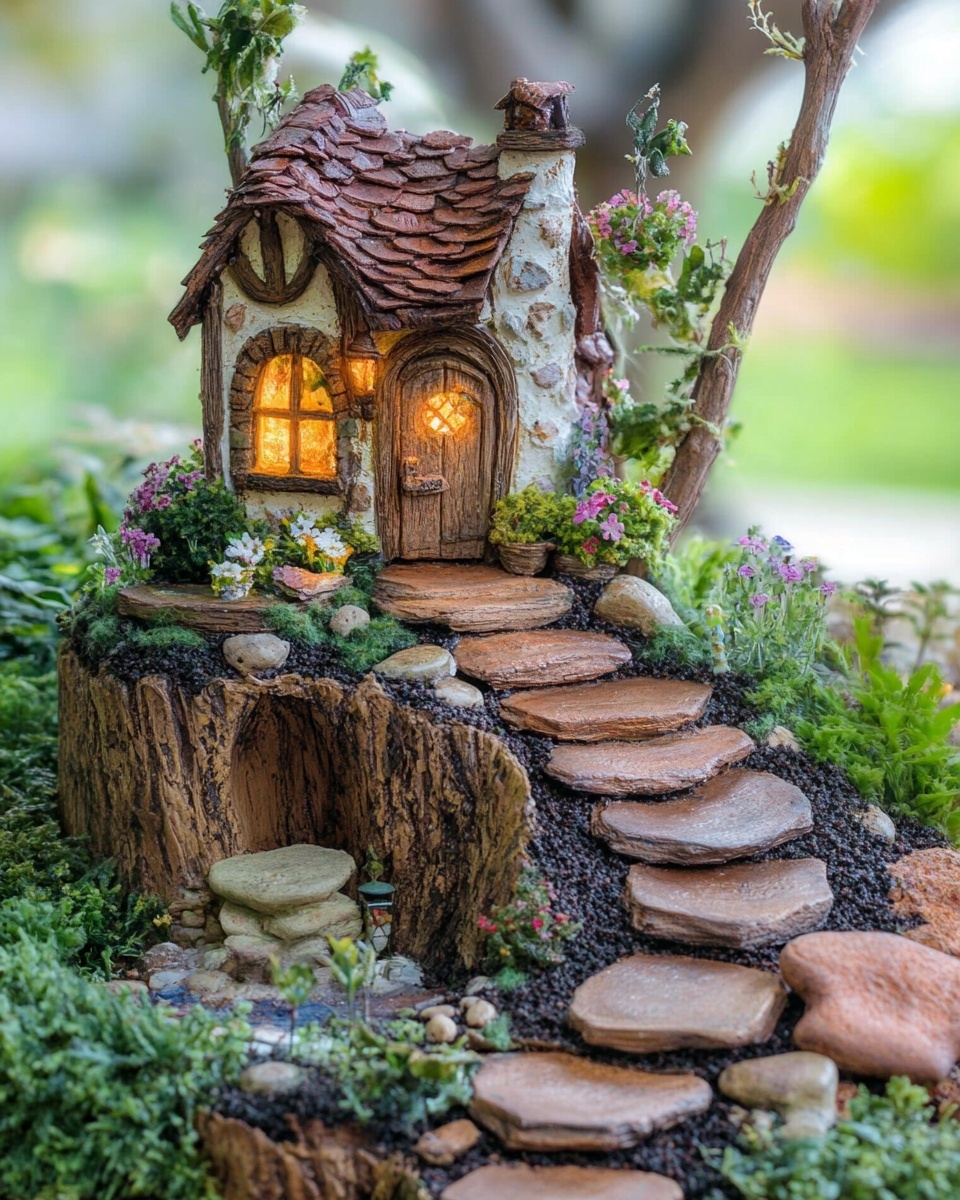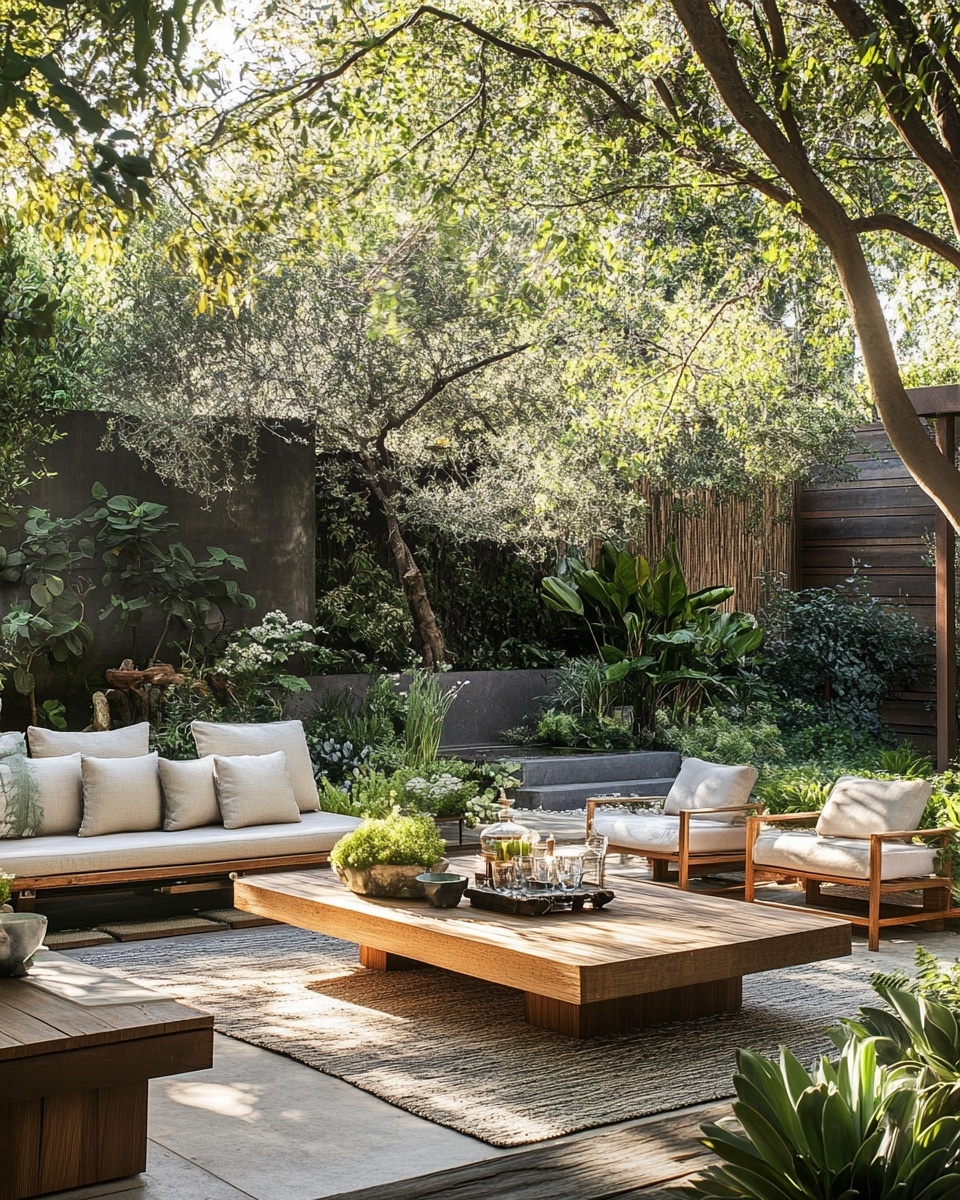Introduction
Did you know that enjoying fresh, home-grown herbs isn't restricted to sunny garden beds or vast outdoor spaces? In fact, a recent survey revealed that over 70% of urban dwellers aspire to grow their own food, yet only 15% feel they have the space or knowledge. This is where the magic of indoor gardening for beginners comes in, transforming windowsills and countertops into vibrant, aromatic havens. Imagine effortlessly snipping fresh basil for your pasta, rosemary for your roasted vegetables, or mint for your evening tea, all year long, regardless of the season outside. It’s an incredibly rewarding pursuit that brings nature indoors, adds flavorful zest to your cooking, and purifies the air. Let's delve into how you can cultivate your own thriving indoor herb garden with ease, turning those gardening aspirations into a delicious reality.
Tools & Materials Needed
Embarking on your indoor gardening journey doesn't require a green thumb or extensive investment. Here’s a detailed list of what you’ll need, along with some eco-conscious and budget-friendly alternatives:
- Pots/Containers: Opt for pots with drainage holes to prevent waterlogging, which is a common killer of indoor plants. Terracotta pots are excellent for herbs as they allow the soil to breathe. For budget-friendly options, consider repurposing old food containers (yogurt cups, milk jugs) or even glass jars, just be sure to drill small drainage holes. A typical 6-inch pot is ideal for a single herb plant.
- Potting Mix: A high-quality, well-draining potting mix is crucial. Look for mixes specifically designed for containers, which usually contain perlite or vermiculite to improve aeration. Avoid using garden soil, as it compacts easily in pots and can introduce pests. For an eco-friendly twist, try making your own nutrient-rich compost mix.
- Seeds or Starter Plants: For beginners, starter plants offer an instant head start. If you're feeling adventurous, seeds are more economical and offer a wider variety. Consider organic or non-GMO options where possible.
- Watering Can: A small watering can with a narrow spout allows for precise watering without disturbing delicate seedlings.
- Hand Trowel and Pruning Shears: Essential for transplanting, loosening soil, and harvesting. Small, sharp scissors work perfectly for pruning.
- Light Source: Natural sunlight from a south-facing window is ideal. If natural light is insufficient (most homes are!), consider a full-spectrum LED grow light. These lights consume minimal electricity and provide the necessary spectrum for healthy plant growth. A single LED grow light can effectively illuminate a small shelf of herbs.
- Drainage Trays: Place these under your pots to catch excess water and protect your surfaces.
- Plant Labels: Keep track of your herbs, especially if you're growing multiple varieties from seed. Popsicle sticks or small plastic labels work well.
Time & Effort Overview
One of the most appealing aspects of indoor gardening is its relatively low commitment compared to outdoor plots.
- Planting: Expect to spend about 30 minutes to an hour setting up your initial indoor gardening for beginners project, depending on whether you're starting from seeds or transplanting seedlings.
- Daily Maintenance: A quick 5-10 minute check, primarily for watering and light adjustments.
- Weekly Maintenance: Around 15-20 minutes for more thorough checks, including rotating pots, light pruning, or checking for pests.
- Growth Rate: Herbs like basil and mint can show significant growth within 2-4 weeks, often growing 25% faster than comparable outdoor crops in optimal indoor conditions due to consistent temperature and light.
- Difficulty Level: Absolutely beginner-friendly! Most common herbs are forgiving and resilient, making them perfect for those just starting out.
Step-by-Step Gardening Process

Ready to get your hands dirty? Let's walk through the simple steps to cultivate your indoor herb garden.
Prepare the Pots and Potting Mix
First, ensure your chosen pots are clean. If they're terracotta, you might want to soak them in water for 30 minutes to prevent them from wicking away moisture from the soil too quickly. Fill each pot with your well-draining potting mix, leaving about an inch of space from the rim. This gap helps prevent soil from spilling out when you water.
Planting Your Seeds or Starter Plants
If starting from seeds, read the seed packet for specific depth and spacing recommendations. Generally, a good rule of thumb is to plant seeds at a depth twice their size. Cover lightly with soil and gently pat down. If using starter plants, carefully remove them from their nursery pots, loosen any circling roots, and nestle them into your prepared pots. Backfill with potting mix, ensuring the plant is at the same level as it was in its original container.
Initial Watering
Water thoroughly until you see water draining from the bottom of the pot. This indicates the soil is fully hydrated. For seeds, a gentle misting spray is often better initially to avoid displacing them. Don't worry if it looks a little messy! That's part of the authentic gardening experience.
Positioning for Light
Place your newly planted herbs in a location where they will receive adequate light. Most herbs thrive with 6-8 hours of direct sunlight per day. A south-facing window is ideal. If you don't have enough natural light, set up your grow light. Position it about 6-12 inches above your plants, adjusting as they grow.
Initial Care and Observation
Over the next few days, keep an eye on your plants. Check the soil moisture daily. You'll likely need to water again when the top inch of soil feels dry to the touch. Observe for any signs of stress, like wilting or discoloration, and adjust light or water as needed. Here's how to fix common issues: if leaves are yellowing, it could be overwatering; if they’re crispy, it's likely underwatering.
Growth & Care Tips
Successful indoor gardening for beginners hinges on understanding a few fundamental care practices.
- Watering Frequency: This is often the trickiest part. Herbs generally prefer consistently moist, but not soggy, soil. Overwatering is responsible for root rot in an estimated 60% of houseplant deaths. Stick your finger an inch into the soil; if it feels dry, it's time to water. Adjust based on plant type and humidity. For example, rosemary prefers slightly drier conditions than mint.
- Sunlight Exposure: As mentioned, 6-8 hours of direct light is best. If using a grow light, a timer can ensure consistent exposure. Rotate your pots weekly to ensure all sides of the plant receive light, promoting even growth.
- Pruning: Pruning isn't just for aesthetics; it encourages bushier growth and higher yields. Once your herb plant has established a few sets of leaves, start pinching off the top 2-3 inches of growth, just above a leaf node. This tells the plant to branch out rather than grow tall and leggy. For leafy herbs like basil, aim to harvest about 30% of the plant at a time.
- Fertilization: Indoor herbs use up nutrients in their potting mix more quickly than outdoor plants. Begin fertilizing about 4-6 weeks after planting with a diluted liquid organic fertilizer, following package instructions. A monthly feeding is usually sufficient during the growing season.
- Pest Prevention: Indoor herbs are less prone to pests than outdoor ones, but they're not immune. Inspect your plants regularly for common culprits like aphids or spider mites. A simple solution of insecticidal soap or neem oil can effectively combat most indoor pests. Early detection is key!
Eco-Friendly & Sustainable Alternatives
Incorporating sustainability into your indoor gardening for beginners practice is both easy and rewarding.
- Composting: Start a small indoor compost bin for kitchen scraps. The nutrient-rich compost can be added to your potting mix, reducing waste and enriching your soil.
- Natural Fertilizers: Instead of chemical fertilizers, consider compost tea, worm castings, or even diluted coffee grounds for an acidic boost (check if your herb prefers acidic soil, like rosemary).
- Water Conservation: Use a self-watering planter or implement a saucer method where plants soak up water from below, reducing evaporation. Collect rainwater if possible for an extra eco-friendly touch.
- Small Spaces: Even the tiniest apartment can house a thriving herb garden.
- Vertical Gardens: Wall-mounted planters or tiered shelving units are fantastic for maximizing vertical space. Look up "vertical indoor garden ideas for small spaces" for inspiration!
- Balcony Gardens: If you have a small balcony, consider moving your indoor herbs out during warmer months. You can find many ideas for "compact balcony herb garden layout plan" online.
- Repurposing: Old wooden pallets can be upcycled into charming planters, and Mason jars make stylish mini-herb gardens.
Creative Ideas & Uses
Your indoor herb garden is not just a source of fresh ingredients; it's a living decor piece!
- Edible Decor: Arrange a collection of healthy, thriving herbs on a kitchen windowsill or a floating shelf. The varying textures and shades of green add natural beauty and a fresh aroma to your space.
- Charming Centerpieces: A few small potted herbs like thyme and oregano can make an understated yet elegant centerpiece for your dining table.
- DIY Gifts: Grow extra herbs and gift them to friends and family in decorative pots. Homemade herb blends or infused oils made with your fresh harvest also make thoughtful presents.
- Seasonal Displays: Combine herbs with small decorative elements like fairy lights for a festive glow, or small gourds for an autumn touch.
- Aesthetic Combos: Pair upright herbs like rosemary with cascading varieties like creeping thyme in larger pots to create a dynamic visual display. Don't be afraid to experiment with different pot styles and colors to match your home's aesthetic.
Common Mistakes to Avoid
Even experienced gardeners make errors, but recognizing common pitfalls can save your indoor herbs.
- Overwatering: As previously noted, this is the number one killer. Excess water suffocates roots, leading to root rot. If you see yellowing leaves with soft, mushy stems, you’re likely overwatering. Allow the top inch of soil to dry out completely before watering again.
- Insufficient Light: Leggy, stretched-out growth with pale leaves indicates your herbs aren't getting enough light. Plants are "reaching" for more light. Move them to a brighter spot or invest in a grow light.
- Lack of Drainage: Pots without drainage holes trap water, making overwatering almost inevitable. Always use pots with drainage! If you adore a decorative pot without holes, use it as a cachepot – place a well-draining pot inside it and remove the inner pot for watering.
- Ignoring Pests: A tiny spider mite on day one can become an infestation by day five. Regular inspection and prompt action are crucial. A study found that addressing pest issues within 48 hours of detection drastically reduces the likelihood of plant death by over 80%.
- Over-fertilizing: More isn't always better. Too much fertilizer can burn plant roots. Stick to the recommended dosage, and err on the side of under-fertilizing rather than over-fertilizing, especially for young plants.
Maintenance & Storage Tips
Keeping your indoor herbs healthy and productive for the long haul requires ongoing attention.
- Regular Pruning: Consistent harvesting is key for most herbs. For example, pinching basil leaves every week or two encourages fuller growth and prevents flowering (which can make leaves bitter). Trim back woody stems on rosemary or thyme to encourage fresh shoots.
- Repotting: As your herbs grow, they may become root-bound, meaning their roots have filled the pot. Signs include water running straight through, stunted growth, or roots emerging from drainage holes. Repot into a slightly larger pot (1-2 inches wider) with fresh potting mix every 1-2 years.
- Soil Amendment: Over time, potting mix can lose its structure and nutrients. Top-dress with a layer of fresh compost or worm castings annually to replenish nutrients without fully repotting.
- Managing Yellow Leaves: Aside from overwatering, yellow leaves can indicate nutrient deficiencies (nitrogen being common) or simply old age. Remove yellow leaves to direct the plant's energy to new growth. If widespread, consider a balanced liquid fertilizer.
- Seed Storage: If you're saving seeds, store them in a cool, dark, dry place in airtight containers. Label them clearly with the date. Proper storage can keep seeds viable for years.
Conclusion
Embracing indoor gardening for beginners offers a wealth of benefits, from enhancing your culinary creations and beautifying your home to reducing stress and fostering a deeper connection with nature. We've explored everything from the essential tools and simple step-by-step planting guides to crucial care tips and sustainable practices. Remember, every master gardener started with a single seed (or a starter plant!). The key is consistent care, observation, and a willingness to learn from your plant's signals. So, why wait? Transform your living space into a thriving, aromatic sanctuary. Get started with your indoor herb garden today – you'll be amazed at the freshness and flavor you can bring to your table! We'd love to see your progress; share your blooming indoor gardens on social media!
FAQ
Q1: What are the best herbs for indoor gardening for beginners?
A1: For new indoor gardeners, basil, mint, chives, oregano, thyme, and rosemary are excellent choices. They are generally resilient and have relatively straightforward light and water requirements.
Q2: How much sunlight do indoor herbs really need?
A2: Most culinary herbs thrive with at least 6-8 hours of direct sunlight daily. A south-facing window is ideal. If natural light is limited, a full-spectrum LED grow light is a fantastic investment for successful indoor gardening.
Q3: How often should I water my indoor herb garden?
A3: Water when the top inch of soil feels dry to the touch. This can vary from every few days to once a week, depending on the herb, pot size, and humidity. Always ensure your pots have good drainage to prevent root rot.
Q4: Can I use regular garden soil for my indoor herbs?
A4: It's not recommended. Garden soil is too dense for pots, lacks proper drainage, and can introduce pests and diseases into your home. Always use a high-quality, sterile potting mix designed for containers for your indoor gardening for beginners projects.
Q5: My herbs are leggy and pale. What's wrong?
A5: Leggy growth with pale leaves is a classic sign of insufficient light. Your plants are stretching to find more illumination. Move them to a sunnier spot or supplement with a grow light to promote healthier, bushier growth for your indoor gardening efforts.
Q6: Do indoor herbs need fertilizer?
A6: Yes, potting mixes eventually run out of nutrients. Start fertilizing your indoor herbs with a diluted liquid organic fertilizer about 4-6 weeks after planting, roughly once a month during their active growing season.
Q7: How do I keep pests away from my indoor herbs?
A7: Regular inspection is your best defense. If you spot any pests like aphids or spider mites, address them immediately with organic solutions like insecticidal soap or neem oil spray. Maintaining good air circulation can also help deter pests.
If you enjoyed learning about indoor gardening for beginners, you might also find these articles helpful:
- For more inspiration on growing herbs in compact spaces, check out our guide on how to start a balcony herb garden in small spaces.
- Curious about other easy plants to grow? Explore our best houseplants for beginners.
- If you're interested in larger-scale indoor growing, perhaps read up on easy indoor gardening setup for beginners.
- Discover creative ways to display your green friends with our creative indoor plant decor ideas.
- Need to solve your pest problems in a natural way? Find more useful content on Pinterest with unique ways to garden sustainably: https://www.pinterest.com/janatjanay47/






